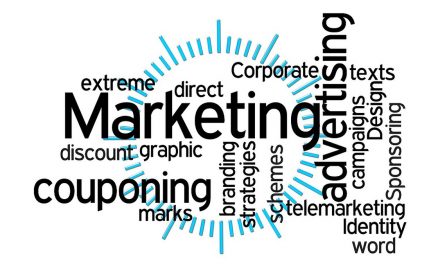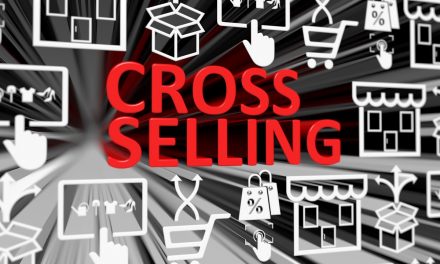. . . Says Dan Kennedy, author of the ‘No BS’ series of business books.
The journey took almost 45 hours’ door to door and most people thought, “Jay, you poor bastard, I’d be tearing my hair out”.
And yes, to most it would seem like a nightmare, it’s all about perspective.
So many people said, “if you travelled Business Class you would not have had that problem”, but I can’t see a problem. Flying doesn’t stress me like so many others and I get so much done.
So, I was travelling to Cleveland for a 3-day seminar with one of my business mentors, Dan Kennedy, author of the ‘No BS’ business books. To ensure that I didn’t miss any of it, I left a day early. That way, when the seminar started, I’d have had a day to recover from jetlag and would be able to absorb all info that he had to share. Unfortunately, the security gods of the airport wanted to hamper that plan, and as a result of missing 2 connecting flights and getting my bags lost, I finally arrived just in time for the summit.
When I was in Toronto, I was told that I wouldn’t be able to catch a flight that evening and they would fly me out the following day. Aggh, after waiting a further 3 hours at the airport, they finally put me on a flight that had gone technical and, as I sat in the seat, there was a technician fastening the baggage box above me with a piece of wire and Gaffa Tape! I kid you not.
Half an hour earlier I was checking on Uber to see how much a taxi would cost to make the journey and, had the flight been cancelled, I would have collected my bags and booked an Uber to take me to Cleveland; I could have slept in the taxi for the 4-5hr journey and I would have been fine.
Why would you not just take the plane the next day?… I bet you’re thinking. Simple. The seminar is not cheap; it’s a massive investment that most would baulk at. But to those that attend year on year, the value to our businesses is proportional to the amount that it is implemented… and as I said before, I wasn’t going to miss a single minute!
All of my marketing strategies are generated from and being exposed to this information, so I feel privileged to be able to afford to attend and would not miss a second, if that was at all possible.
For those of you that have not read any of Dan’s ‘No BS Direct Response’ philosophies, then start by reading the ‘No BS Guide to Direct Response Marketing’, available on Amazon… buy the hard cover, and start implementing. Also check out his ‘Magnetic Marketing’ series, worth every penny and more if you care to heed the advice.
And no, I don’t buy into the BS of, “my business is different” or “I live in the UK, so the American way of business won’t work”. Give me a break.
OK, so what did I learn and what one piece of information was worth the trip and the cost alone? Well it’s in the title: People buy from people they know, like, and trust.
Yeah, but Jay, we all know that already, so what? That’s what I thought. I’ve got over 60 action points taken over the 3 days of things that need to be implemented.
So, what is the first step in getting people to know, like, and trust, and the single most important resource you have that can make this happen?
Well that’s your life story, and the better you share that story, the more value it will have.
Great people have been telling me for years that I’ve got an incredible life story that I should publish, but inside, whilst I know this to be true; without sounding big headed, I really don’t want to bore my customers with an epic novel of trial and tribulation.
In Dan’s course, ‘Writing with Personality’, he talks about putting real life stories into your copy to refer to situations that customers could and would find themselves in.
Since implementing that style of writing, I’ve found that the copy with the most interesting personal stories is also the one my prospects refer to when they first come to visit.
So, would they even read the life story?
Well, here’s the point: those that do, are more likely to become customers because they have engaged with you at a personal level.
So, what have you got to lose?
Now I had already decided to shoot my life story, and some of you may have heard the interview that Steve did with me. The interview was simple: sit with Jay and let’s see what comes out in an hour and a half, and because we are both army people, that story is one of many relating to my life and the impact military service had on it.
It’s one perspective, and, while it’s good, had I attended the seminar with Dan before recording that, I would have structured it differently and I would have been a lot more prepared.
Jay what are you talking about, your life story? Is your life story, ‘Tell it the Way it is’?
Yup, but that’s where you’d be missing the point completely. The whole point of writing your life story is not for self-gratification, it’s not designed to be a, ‘look here, look how much I’ve achieved, look at what an interesting life I’ve had’. That’s a biography.
Nope the reason for writing the life story, the ‘who am I?’ is to find as many levels to connect with your prospect as possible.
As a result, you need to know the psychometrics as well as the demographics of your customer so that, as you write, you can include the stories that they’ll identify with.
The more points you reference that make connections, the more chance you have of getting the deal, and most importantly, the less price has to do with it. As I found out, people will pay more for service from someone they trust than a ‘salesman’, I mean that in the broadest terms.
Unfortunately, as Dan puts it, this may mean that you’ll need to cut some of your best stories, the ones that you tell at the table to amuse. Why? Because those stories, interesting as they may be, will not resonate with the ideal customer, and importantly, not do credit to your expertise.
As an example: one of my favourite stories is how I plumbed my Mother-in-law’s dishwasher into the water main. And how I realised the mistake I’d made when the dishwasher was filling up with gas rather than water; and then offered to go back to my factory to get my gas torch and some solder and fix the problem!
Mmm, I know what you’re thinking: you too would love to do that.
But alas, whilst it’s entertaining, the mere fact that I sell some of the most expensive wood gas combination pizza ovens on the market, huge beasts that bellow fire and cook 1000s of pizzas per day, it may not rest well with my customers. What do you think?
So, to write the story by formula, you need to know exactly who your customer is and have the perfect customer avatar nailed down hard. The stories would be stories that you’d tell at a cocktail party if you were invited with his or her friends.
- So, if your ideal customer is someone who goes to the pub after work with his mates, the stories would be completely different from those that you would tell in your book if they attended wine tasting events instead.
- If your customer, on the whole, lives in a council house and has no intention of ever owning a house, then the stories would be different from those that you would tell if they had a detached house in a gated community.
- If your ideal customer is a pacifist who avoided the draft, then it’s quite clear that your story based on military experience would drive them away.
- If your customers tend to be on the whole self-employed capitalists, then stories about the working hours and liberty of the staff and staff-rights will drive them away.
Remember you can’t be everything to everyone.
Recently I was driving past a local garden centre, they had a new sign up: ‘Something for Everyone’. How sad, they would have, in my opinion, been better off to say, ‘If you have expensive taste, you will love what we have on offer’.
So, if you have different segments of customers, you need to talk to each segment differently. Identifying what to say and what stories to tell is the challenge and the key to unlocking the chest.
The event I attended was called ‘Marketing to the Affluent’. Yup, it’s fair to say that I have positioned myself up there as the expert in wood fired ovens. But again, Dan said that there are a proportion of your customers who are willing to pay more than you charge, more for being who you are, than for what you know. But these high-end customers also need to be treated differently to the majority. Striking a happy medium between being available and unavailable is one of the most important lessons we can learn. By being unavailable you make yourself valuable and making the affluent wait means that you can feed them information to engage. Plus send them stuff to make them feel valuable. The better the quality of the stuff you send, the better the chance of engagement.
At last count I spent approximately £146 on Google to acquire a customer, and I spent about £6 on postage.
Dan says, the one mistake he’s made, is not spending enough to buy customers early on.
When I asked if there was an equation for calculating the right amount, he asked me how much I thought I should spend. Up to this point, I had thought I was reasonably marketing savvy and replied “as little as possible” … Ooops, mistake. I think if Dan had had a hangman’s noose and it was tied around my neck, he’d have pulled the leaver. The next 20 minutes was hell and he literally climbed into me for my stupidity. His point was, and rightly so, if I was paying £146 on average for a customer, how many more customers would I have, if I spent £300 to acquire each one. He finished off by advising that the person who could afford to pay 10x what his competitor was prepared to pay to buy a customer, would ultimately win, as long as they had enough profit to make it viable, though each route to market would have a different cost of acquisition.
Again, as an example, if you attended a trade show and your cost of acquisition rose to £2000 per customer, on average does that mean you should not attend? On the contrary; if you are making sales and you can still make a modest profit, then you should still attend. In some markets you may be able to achieve high gross margin %, just be sure that you are, and you have crunched the numbers right.
The thing that will get you noticed is your expertise in the field you specialise in, and the way in which your own story conveys the journey you’ve experienced to gain the expertise you have.
The more detailed and personal the story is, the more chance you have of resonating with the prospective customer. But the kicker comes once that person has acquired your product, they’ll start to re-tell your story to others as a point of conversation, elevating your position and increasing the chance of referral. Not because of what you sell, but because you are the go-to guy in that industry.
So, start making notes on events in your life, just key points at this time, and then start writing each story, first as a paragraph, before bulking it out. Many will remain paragraphs, but the lessons of importance will become chapters, and once finished should have engaged your target demographic.
12 chapters.
12 different demographics with which to engage.
Each chapter full of paragraphs designed to engage with different people within that demographic.
I’ve already started with a vengeance and can’t wait to get it finished.
But will you?





